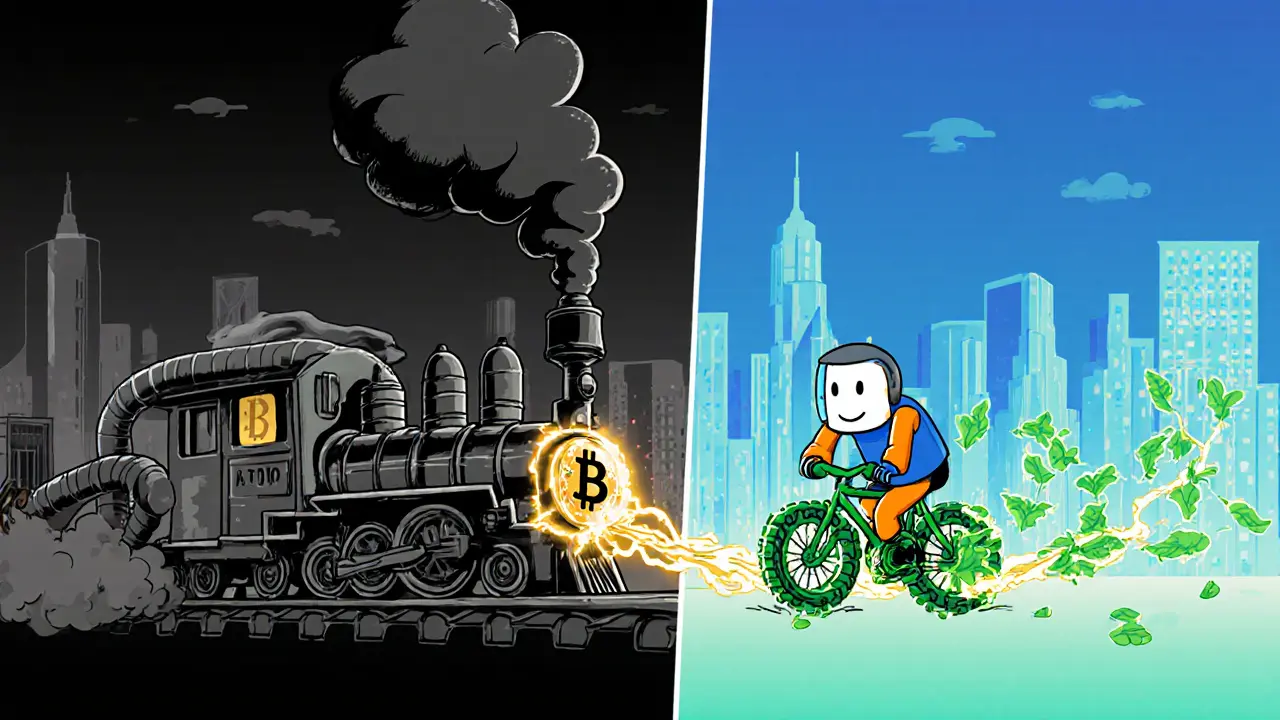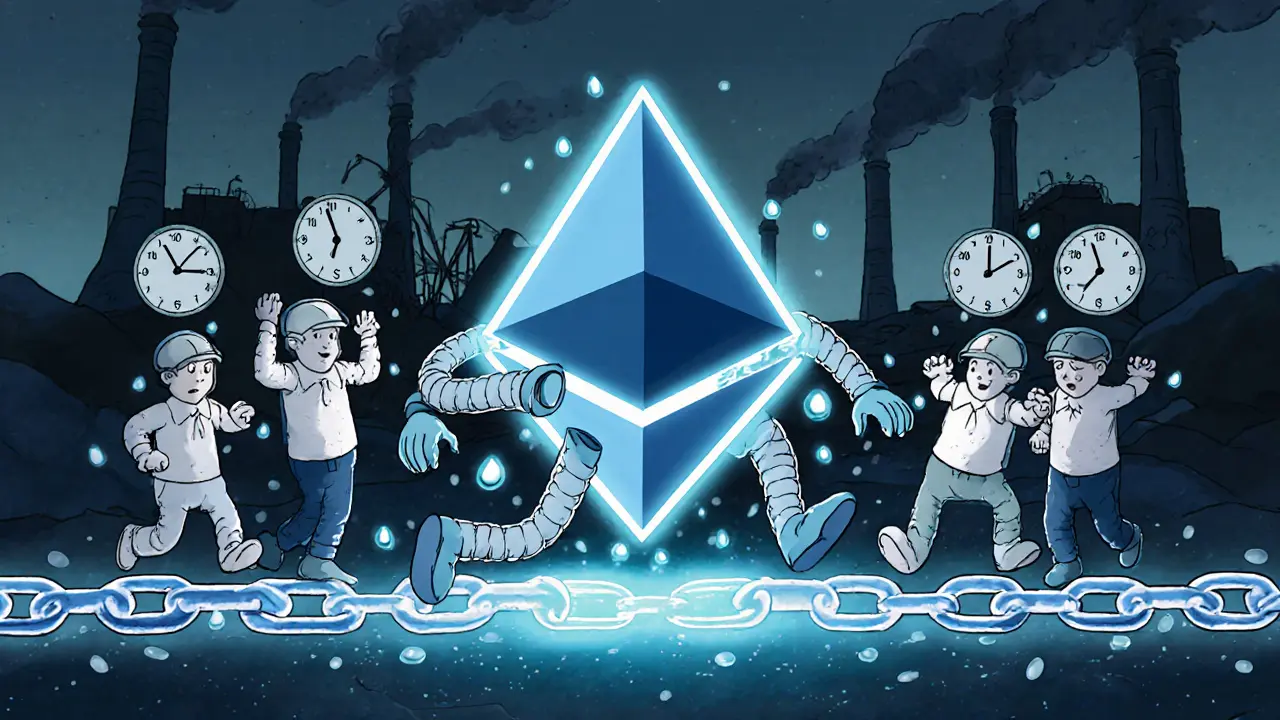Ethereum Merge: What It Changed and Why It Still Matters
When the Ethereum Merge, the historic upgrade that switched Ethereum from proof of work to proof of stake. Also known as The Merge, it didn’t just change how Ethereum works—it rewrote the rules for blockchain sustainability. Before September 2022, Ethereum used the same energy-hungry mining method as Bitcoin. Miners competed with powerful hardware to solve puzzles, burning electricity like it was cheap. After the Merge, that entire system vanished. Validators now secure the network by locking up ETH and staying online. No more rigs. No more noise. Just code and commitment.
The proof of stake, a consensus mechanism where participants stake cryptocurrency to validate transactions model didn’t just save energy—it changed incentives. Miners who once earned block rewards now earn staking rewards, and those rewards are smaller but far more predictable. This shift made Ethereum more like a savings account than a mining rig farm. It also made the network more resistant to centralization. You don’t need a warehouse full of GPUs to run a validator—just 32 ETH and a decent internet connection. That opened the door for everyday users to help secure the network, not just big mining pools.
And the blockchain consensus, the system that ensures all nodes agree on the state of the ledger didn’t just get greener—it got smarter. With proof of stake, Ethereum can now plan upgrades faster. There’s no need to wait for mining hardware to catch up. No more halvings. No more hash rate wars. The network responds to code changes, not hardware cycles. That’s why you’ve seen so many improvements since the Merge: lower fees, better scalability, and new features like EIP-4844 that cut data costs for rollups.
But here’s the thing: the Merge didn’t fix everything. Gas fees didn’t vanish. Scalability is still a work in progress. And while staking rewards are real, they’re not life-changing—right now, they hover around 3-5% APY. If you’re looking for a miracle, you won’t find it here. But if you care about a blockchain that’s actually building for the future instead of burning through power, then the Merge matters. It proved that crypto doesn’t have to be an environmental burden. It showed that innovation can be responsible.
What you’ll find below are real stories about what happened after the Merge—how it affected exchanges, how staking wallets changed, why some projects moved away, and how users adapted. Some posts talk about slashing risks. Others explain how validators handle downtime. A few warn about fake staking services pretending to be official. This isn’t theory. These are lessons from people who lived through it.
Proof of Stake uses 99.95% less energy than Proof of Work, making it the most sustainable blockchain consensus model. Ethereum's 2022 switch slashed its power use from gigawatts to megawatts, setting a new standard for the industry.
The Ethereum difficulty bomb was a hidden timer designed to force the network’s switch from energy-heavy mining to Proof of Stake. It worked-by making mining so slow and expensive that change became unavoidable.

